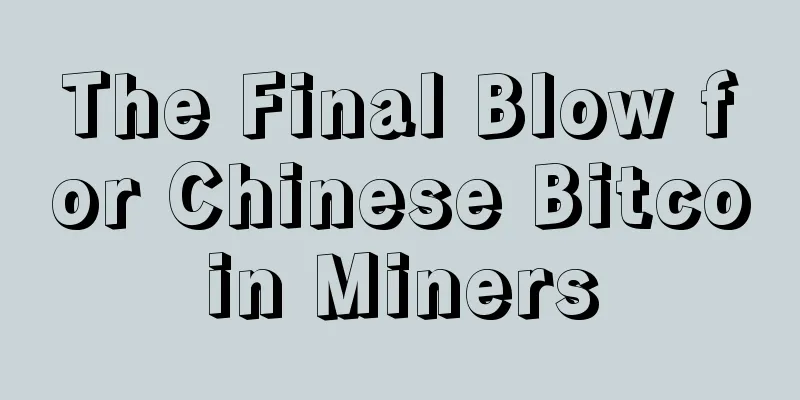Will UST be the end of algorithmic stablecoins?

|
Author: Daniel Kuhn from coindesk Compiled by: Amy Liu UST, a stablecoin that once had a market cap of $18 billion, now trades for less than 20 cents, severely decoupled from the dollar. Terraform Labs deployed about $3 billion worth of Bitcoin and injected a large amount of UST's sister token LUNA into the market. However, these all ended in failure, and even Terraform Labs CEO Do Kwon said that the former network could not be saved. All of this raises two very important questions for the industry: Is this the end of all algorithmic stablecoins? And should regulations be put in place to prevent similar disasters from happening? Jonathan Wu, head of growth at layer 2 network Aztec Network, believes this is not the end of algorithmic stablecoins. “Algorithmic stablecoins are the holy grail,” he said on the “Unchained” podcast. “If you think about what an undercollateralized algorithmic stablecoin is, it’s just printing money out of thin air. In my opinion, there will always be capital chasing this dream.” Stablecoins are necessary to smooth out the volatility of cryptocurrencies, and if there were a cheaper way to do it, people would try it. There are basically two models of stablecoins: collateralized and non-collateralized. Collateralized stablecoins like USDC or Tether keep financial reserves like currencies or bonds in assets like bank accounts to ensure that holders can redeem them for actual currency at some point. Algorithmic stablecoins attempt to maintain their pegs through other financial means. UST uses an on-chain redemption tool and an associated token, LUNA, to support the value of UST based on changing supply and demand. As UST rises or falls against the dollar, LUNA is burned or minted. The aim is to create a “crypto-native” dollar — one that has all the benefits of blockchain, like censorship resistance, but is cheaper than fully or partially collateralized. Wu compared it to DAI , a blockchain-based stablecoin maintained by MakerDAO , which holds over-collateralized cryptocurrency reserves and costs $2 to use. He said, “Now, if I was a venture capitalist or a capital provider and I was looking at this, I would say I could create a monetary system that was 10 times more capital efficient. I would be willing to chase that dream over and over again.” Widespread risks Prior to last week’s crash, UST had experienced only two significant decouplings, one in December 2020, when it fell to about 85 cents, and another in May 2021, when it fell to 94 cents. Yet, along the way, figures like University of Calgary professor Ryan Clements have been sounding the alarm. Clements wrote a well-thought-out article claiming that all algorithmic stablecoins are doomed to fail. These assets have the same value as fiat currencies, the problem is, Terra ’s user base isn’t large enough. In addition to the demand issue, Clements noted that Terra relies on “self-interested” investors who can profit from its algorithm when it starts to fail. As we saw last week, “herd” selling pressure exacerbated the sell-off. Clements argues that other algorithmic stablecoins — such as MIM , FRAX, and USDN — are far from immune. They are “in a state of permanent vulnerability” because they are backed by volatile assets and prone to herd behavior, he wrote. Just today, Deus Finance’s algorithmic stablecoin DEI fell to 54 cents during European trading hours, in part due to the volatility of stablecoin trading. Kwon’s previous project Basis Cash and algorithmic stablecoin IRON also experienced similar problems — prompting investor Mark Cuban to call for stablecoin regulation. “What are algorithmic stablecoins? Are they stable? Do buyers understand what the risks are? It needs standards,” Cuban tweeted in September. If the on-chain mechanism cannot maintain its own price control, then some other entity will step in to set the standard. Setting the rules Unfortunately for the crypto industry, they don’t necessarily get to write their own rules — even if they can participate in the drafting process. For regulators, anyone can create a crypto system — a process that means the financial police have been and will likely continue to play whack-a-mole with issuers. And while the SEC has begun cracking down on the industry, issuing widespread warnings and doubling the size of its crypto enforcement division — even with clear rules, there will still be some anarchists like Kwon willing to rebel against the system. “I don’t think you can proactively regulate something like UST, just like you can’t regulate plustoken, paycoin or onecoin,” venture capitalist Nic Carter said, adding that UST never fit the term stablecoin because its real goal is to promote LUNA. He said, “So, the questions ‘how do we regulate USDC’ and ‘how do we deal with UST/Luna’ are completely different. The latter is more about how to stop large-scale financial fraud from happening. Rules are coming for stablecoins to make them look and function more like banks. Similar rules can be self-enforced in the crypto industry. Even for algorithmic stablecoins, users may need strong reserves.” Whether such a system is feasible, and whether authorities will use tokens that increasingly resemble securities, are open questions. But the lesson for many investors may be to choose collateralized stablecoins in the future. How long this preference will remain, or how long the memory of UST’s implosion can last, is another thorny question. As Tomlin said, “I think the main reason people will continue to try is because of the free money.” |
<<: Rising from the ashes? Do Kwon proposes "Resurgence Plan 2" to save the Terra ecosystem
Recommend
IPFS/FIL mining machine is available for new users to register and get 10T Bitcoin computing power (miss it and wait for the next batch with tears)
Registration address: http://api.suanlifeng.com/w...
The road to $120 billion: A review of Tether’s development and outlook for the next decade
Tether is the largest company in the digital asse...
A face that indicates natural luck and superiority
Whether a person's life is going smoothly and...
What are the facial features of short-sighted people?
Generally speaking, it is better to have a longer...
What kind of woman's face is unlucky for her husband? Her thick lips
Facial features represent a person's characte...
Is it good to have a mole under the eye? Is it good for wealth?
Often a person's face can provide people with...
What are the five types of facial features that indicate a beggar's fate?
There are all kinds of people in this world. Gene...
What kind of women have the fate of killing their husbands?
If a woman has the fate of bringing bad luck to h...
Hawaii regulators discuss legalizing Bitcoin
Many regions have been discussing the legalizatio...
Palmistry Jupiter Hill Fortune Telling Diagram
In palmistry, every line, every finger and even t...
Men with this facial feature have a life full of failures.
No one wants his life to be full of failures, but...
What are the facial features of a promiscuous woman?
Whether a person is really promiscuous or unfaith...
Bitcoin once broke through $6,300 and rose more than 550% this year
At around 4 a.m. Beijing time on the 30th, as the...
How can data managers effectively control blockchain technology?
Steve Eric is a group manager at Spitzberg Partne...
"Coin Plus" received 10 million yuan in angel round financing, exploring incremental digital currency users through "simulated trading + content community"
Odaily Planet Daily learned that the cryptocurren...









